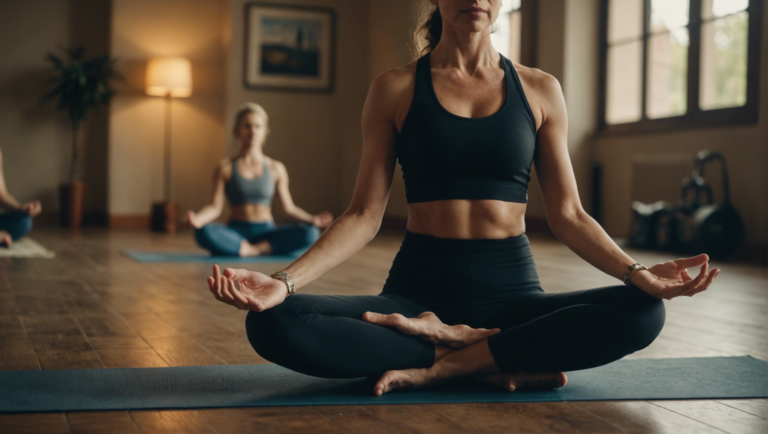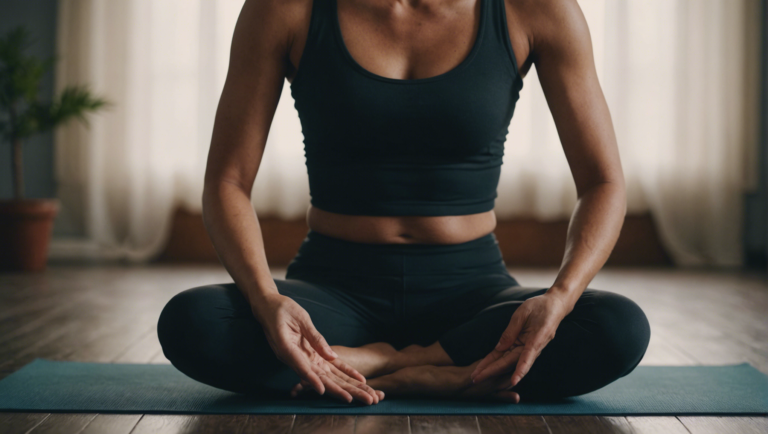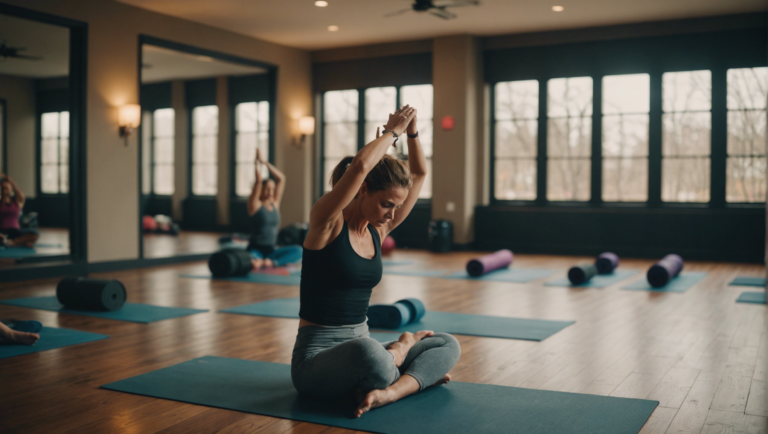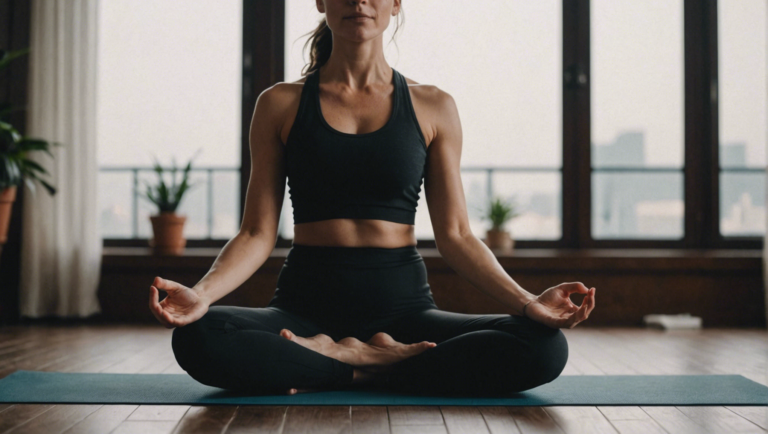Guidelines On Reducing Blood Pressure With Baba Ramdev’s Yoga Techniques
Overview of Baba Ramdev’s Yoga Techniques for Reducing Blood Pressure
Baba Ramdev, a renowned yoga guru from India, has garnered international recognition for his holistic approach to health and well-being. His yoga techniques offer a natural and effective way to reduce high blood pressure, also known as hypertension. By incorporating Baba Ramdev’s yoga practices into your daily routine, you can experience numerous benefits for both your physical and mental health.
The Link Between Yoga and Blood Pressure Reduction
Research studies have shown that practicing yoga can have a positive impact on lowering blood pressure levels. Yoga involves gentle physical poses, controlled breathing exercises, and meditation, which work together to reduce stress, improve circulation, and promote overall heart health. Baba Ramdev’s specific yoga techniques focus on these key aspects to help individuals manage their blood pressure effectively.
Understanding the Importance of Yoga for Hypertension
High blood pressure is a common health condition that can lead to serious complications such as heart disease, stroke, and kidney problems if left untreated. While medication is often prescribed to control hypertension, integrating yoga into your daily routine can serve as a complementary approach to managing this condition. Baba Ramdev’s yoga techniques are designed to address the root causes of high blood pressure and promote long-term wellness.
Practicing Yoga Poses for Blood Pressure Regulation
Baba Ramdev advocates for a series of yoga asanas or poses that can help regulate blood pressure levels. Some of the beneficial yoga poses recommended for reducing hypertension include:
-
Sukhasana (Easy Pose): This seated pose promotes relaxation and calms the mind, reducing stress levels that can contribute to high blood pressure.
-
Surya Namaskar (Sun Salutation): A dynamic sequence of poses that helps improve circulation, strengthen the heart, and enhance overall cardiovascular health.
-
Padahastasana (Standing Forward Bend): This standing forward bend pose stretches the spine and hamstrings, relieving tension and promoting blood flow throughout the body.
-
Bhujangasana (Cobra Pose): By opening up the chest and stretching the abdominal muscles, this pose can help lower blood pressure and improve respiratory function.
Breathing Exercises for Blood Pressure Management
In addition to yoga poses, Baba Ramdev emphasizes the importance of pranayama, or breath control techniques, for regulating blood pressure. Deep breathing exercises such as Anulom Vilom (Alternate Nostril Breathing) and Bhastrika Pranayama (Bellows Breath) can help calm the mind, reduce anxiety, and lower blood pressure naturally.
Baba Ramdev’s yoga techniques provide a holistic approach to reducing blood pressure and promoting overall well-being. By incorporating yoga asanas and pranayama into your daily routine, you can effectively manage hypertension and improve your quality of life. Remember to consult with a healthcare provider before starting any new exercise regimen, especially if you have underlying health conditions. Embrace the power of yoga and embark on a journey towards better heart health with Baba Ramdev’s transformative teachings.
Understanding the Connection Between Yoga and Blood Pressure
Yoga has been recognized for its various health benefits, including its potential to help in reducing blood pressure levels. Baba Ramdev, a renowned yoga guru, has popularized several yoga techniques that are believed to be effective in managing and decreasing high blood pressure. Understanding the connection between yoga and blood pressure can provide valuable insights into how these practices can contribute to better overall health and well-being.
The Impact of Stress on Blood Pressure
Chronic stress is a significant contributor to high blood pressure. When individuals experience stress, their bodies release hormones that constrict blood vessels and increase heart rate, leading to elevated blood pressure levels. Prolonged high blood pressure can increase the risk of heart disease, stroke, and other serious health conditions. stress-reducing techniques such as yoga into a daily routine can help mitigate the effects of stress on the body and promote relaxation.
Yoga as a Mind-Body Practice
Yoga is a mind-body practice that combines physical postures, breathing exercises, and meditation. Through the practice of yoga, individuals can achieve a state of deep relaxation, reduce stress levels, and improve overall mental and physical well-being. The gentle movements and controlled breathing techniques involved in yoga can help calm the nervous system, lower heart rate, and promote feelings of peace and tranquility.
Baba Ramdev’s Yoga Techniques for Lowering Blood Pressure
Baba Ramdev has developed specific yoga techniques that target high blood pressure and aim to bring the body and mind into a state of balance. These techniques often focus on gentle stretching exercises, deep breathing, and mindfulness practices. By practicing Baba Ramdev’s yoga asanas regularly, individuals may experience improvements in blood circulation, reduction in stress levels, and ultimately, a decrease in blood pressure readings.
Key Yoga Poses for Reducing Blood Pressure
Several yoga poses are particularly beneficial for lowering blood pressure. Some of the key asanas recommended for managing high blood pressure include:
-
Sukhasana (Easy Pose): This simple seated posture promotes relaxation and helps calm the mind.
-
Balasana (Child’s Pose): A resting pose that gently stretches the back and promotes deep breathing.
-
Bhujangasana (Cobra Pose): This backbend helps open the chest and improve circulation.
-
Shavasana (Corpse Pose): A relaxation pose that allows the body to rest and rejuvenate.
The practice of yoga, especially incorporating Baba Ramdev’s specific techniques, can be a valuable tool in reducing high blood pressure. By integrating yoga into a daily routine, individuals can not only improve their physical health but also enhance their mental well-being. Remember to consult with a healthcare provider before starting any new exercise regimen, especially if you have existing health conditions. Embrace the holistic approach of yoga and experience the transformative benefits it can offer in managing blood pressure levels effectively.
Specific Yoga Poses Recommended by Baba Ramdev for Lowering Blood Pressure
Yoga Poses for Lowering Blood Pressure
High blood pressure, also known as hypertension, is a common health issue affecting a significant portion of the global population. While medications are often prescribed to manage blood pressure levels, alternative practices like yoga can also play a key role in reducing and maintaining healthy blood pressure levels. Baba Ramdev, a renowned yoga guru from India, has highlighted specific yoga poses that can be beneficial in lowering blood pressure naturally.
Balasana (Child’s Pose)
Balasana, also known as Child’s Pose, is a soothing yoga posture that helps calm the mind and relax the body. To practice Balasana, begin by kneeling on the floor with your toes touching and knees spread apart. Slowly lower your buttocks towards your heels while extending your arms in front of you or alongside your body. This pose helps reduce stress and anxiety, which are often contributing factors to high blood pressure.
Vrikshasana (Tree Pose)
Vrikshasana, or Tree Pose, is a balancing posture that encourages focus and stability. To perform Vrikshasana, start by standing tall with your feet hip-width apart. Shift your weight onto your left foot and place the sole of your right foot on your inner left thigh or calf. Find a focal point to maintain balance and bring your hands to prayer position at your chest. This pose improves concentration and circulation, thus assisting in regulating blood pressure levels.
Savasana (Corpse Pose)
Savasana, also known as Corpse Pose, is a deeply relaxing posture that promotes physical and mental rejuvenation. Lie flat on your back with your arms and legs extended comfortably by your sides. Close your eyes and focus on your breath, allowing your body to surrender to the ground beneath you. Savasana helps reduce stress, promote better sleep, and lower blood pressure effectively.
Ardha Matsyendrasana (Half Lord of the Fishes Pose)
Ardha Matsyendrasana is a seated spinal twist that offers a range of benefits, including improved digestion and stimulation of the abdominal organs. To practice this pose, sit with your legs extended and bend your right knee, placing your foot outside your left thigh. Twist your torso to the right, hooking your left elbow outside your right knee. Ardha Matsyendrasana helps relieve tension in the spine, toning the abdominal region, and supporting blood pressure management.
Pranayama (Breathing Exercises)
In addition to yoga poses, Baba Ramdev emphasizes the importance of pranayama, or breathing exercises, in controlling blood pressure. Techniques like Anulom Vilom (Alternate Nostril Breathing) and Bhramari (Bee Breath) can help reduce stress, promote relaxation, and balance the autonomic nervous system, ultimately aiding in blood pressure regulation.
These specific yoga poses and breathing exercises recommended by Baba Ramdev into your daily routine can be a valuable addition to your hypertension management plan. It is essential to practice yoga consistently, listen to your body, and consult with a healthcare provider before making any significant changes to your treatment regimen. By combining traditional medical approaches with holistic practices like yoga, you can work towards achieving optimum blood pressure levels and overall well-being.
Incorporating Meditation and Breathing Exercises into Your Yoga Practice
Yoga is a holistic practice that not only strengthens the body but also calms the mind. By incorporating meditation and breathing exercises into your yoga practice, you can enhance the overall benefits for both your physical and mental well-being. These techniques, when combined with yoga asanas, can help reduce stress, improve concentration, and promote relaxation. Let’s explore how you can integrate meditation and breathing exercises into your yoga routine to reap maximum benefits.
Importance of Meditation in Yoga Practice
Meditation plays a crucial role in yoga as it helps in achieving mental clarity and emotional balance. By calming the mind and focusing on the present moment, meditation allows you to deepen your practice and connect with your inner self. meditation into your yoga routine can help reduce anxiety, enhance self-awareness, and promote a sense of inner peace. Before starting your yoga practice, take a few moments to sit quietly, close your eyes, and focus on your breath. This simple meditation technique can set the tone for a mindful and fulfilling yoga session.
Deep Breathing Techniques for Relaxation
Breathing exercises, also known as pranayama, are an essential component of yoga practice. Proper breathing techniques can help increase lung capacity, improve oxygen flow in the body, and reduce stress levels. One of the most common breathing exercises is diaphragmatic breathing, where you focus on breathing deeply into your abdomen rather than shallow breathing into your chest. deep breathing exercises into your yoga practice can help calm the nervous system, reduce blood pressure, and enhance overall relaxation.
Integrating Meditation and Breathing with Asanas
To fully experience the benefits of meditation and breathing exercises, it is essential to integrate them with yoga asanas. As you move through different poses, focus on synchronizing your breath with your movements. For example, during a forward bend, inhale deeply as you lengthen your spine, and exhale completely as you fold forward. This mindful breathing not only enhances the physical benefits of the yoga poses but also creates a meditative flow that calms the mind and uplifts the spirit.
Cultivating Mindfulness in Your Practice
Mindfulness is a key element of yoga that involves being fully present in the moment without judgment. By incorporating meditation and breathing exercises into your practice, you can cultivate mindfulness both on and off the mat. Pay attention to the sensations in your body, the rhythm of your breath, and the thoughts in your mind as you practice yoga. This heightened awareness can bring a sense of clarity, purpose, and tranquility to your daily life.
Meditation and breathing exercises into your yoga practice can transform your experience on a physical, mental, and emotional level. By embracing these techniques wholeheartedly, you can deepen your practice, reduce stress, and enhance your overall well-being. Remember to approach your yoga practice with an open heart and a focused mind, allowing the benefits of meditation and pranayama to enrich every aspect of your journey towards a healthier and more balanced life.
Creating a Consistent Yoga Routine to Maintain Healthy Blood Pressure
Maintaining a consistent yoga routine can play a vital role in keeping your blood pressure at healthy levels. By incorporating Baba Ramdev’s yoga techniques into your daily practice, you can effectively reduce and control your blood pressure levels. Let’s delve into some guidelines on how to utilize these techniques for optimizing your blood pressure.
Understanding the Importance of Yoga for Blood Pressure Management
Yoga is a holistic approach to improving both physical and mental well-being. When it comes to controlling blood pressure, certain yoga asanas (postures) and pranayama (breathing exercises) can be particularly beneficial. Baba Ramdev, a renowned yoga guru, has popularized many yoga techniques that aim to address various health issues, including high blood pressure.
Baba Ramdev’s Yoga Techniques into Your Routine
-
Anulom Vilom (Alternate Nostril Breathing): This pranayama technique involves breathing through alternate nostrils. It is known to have a calming effect on the mind and nervous system, which can help reduce stress levels and lower blood pressure.
-
Surya Namaskar (Sun Salutation): A series of 12 poses that are performed in a sequence, Surya Namaskar helps improve blood circulation, strengthen the heart, and promote overall flexibility. Regular practice can contribute to better blood pressure management.
-
Vrikshasana (Tree Pose): This balancing asana not only helps improve focus and concentration but also encourages steady breathing. By promoting relaxation and stability, Vrikshasana can aid in reducing stress-induced high blood pressure.
Guidelines for Reducing Blood Pressure with Yoga Practice
-
Consistency is Key: Establish a regular yoga routine, ideally practicing for at least 30 minutes to an hour each day. Consistency in your practice can help regulate blood pressure over time.
-
Focus on Mindfulness: Pay attention to your breath and body during each yoga session. Mindful breathing and movement can enhance the relaxation response in your body, supporting blood pressure management.
-
Modify Asanas as Needed: If you have pre-existing health conditions or injuries, make sure to modify yoga poses accordingly. Consult with a qualified yoga instructor to personalize your practice and avoid poses that may spike your blood pressure.
-
Combine with Healthy Lifestyle Choices: Alongside yoga practice, maintain a balanced diet, stay hydrated, and prioritize sufficient sleep. These lifestyle factors complement the benefits of yoga in managing blood pressure effectively.
By integrating Baba Ramdev’s yoga techniques into your daily routine and following these guidelines consistently, you can take proactive steps towards reducing and maintaining healthy blood pressure levels. Remember, always consult with a healthcare provider before making significant changes to your exercise or wellness regimen. Embrace the holistic approach of yoga, and reap the benefits it offers for your overall well-being.
Conclusion
Maintaining optimal blood pressure levels is crucial for overall health and well-being. Baba Ramdev’s yoga techniques offer a natural and holistic approach to reducing blood pressure. Through a combination of specific yoga poses, meditation, and breathing exercises, individuals can effectively manage their blood pressure levels and improve their quality of life.
By understanding the connection between yoga and blood pressure, individuals can harness the power of this ancient practice to promote cardiovascular health. Yoga helps reduce stress, improve circulation, and enhance overall physical and mental wellness, all of which contribute to lower blood pressure levels. With regular practice, individuals can experience long-term benefits that support heart health and overall vitality.
Baba Ramdev recommends a variety of yoga poses that specifically target blood pressure reduction. Poses such as Surya Namaskar (Sun Salutation), Uttanasana (Standing Forward Bend), and Setu Bandhasana (Bridge Pose) help relax the body, calm the mind, and reduce tension in the muscles. These poses, when practiced mindfully and regularly, can aid in lowering blood pressure and promoting a sense of tranquility.
Meditation and breathing exercises into your yoga practice can further enhance the benefits of reducing blood pressure. Meditation helps quiet the mind, reduce stress, and improve mental clarity. Combined with deep breathing exercises such as Pranayama, individuals can regulate their breath, calm the nervous system, and lower blood pressure naturally. These practices not only benefit cardiovascular health but also promote emotional well-being and inner peace.
To maintain healthy blood pressure levels in the long run, it is essential to create a consistent yoga routine. By dedicating time each day to practice yoga, individuals can establish a healthy habit that supports their overall well-being. Consistency is key in reaping the full benefits of yoga for blood pressure reduction. Whether it’s through a morning flow, a midday stretch, or an evening relaxation session, integrating yoga into your daily routine can have a positive impact on your cardiovascular health.
Baba Ramdev’s yoga techniques offer a valuable resource for individuals looking to reduce their blood pressure levels naturally. By incorporating specific yoga poses, meditation, breathing exercises, and maintaining a consistent practice, individuals can take proactive steps towards improving their heart health and overall quality of life. Embracing the ancient wisdom of yoga, coupled with modern understanding of blood pressure management, can empower individuals to lead healthier and more balanced lives.



